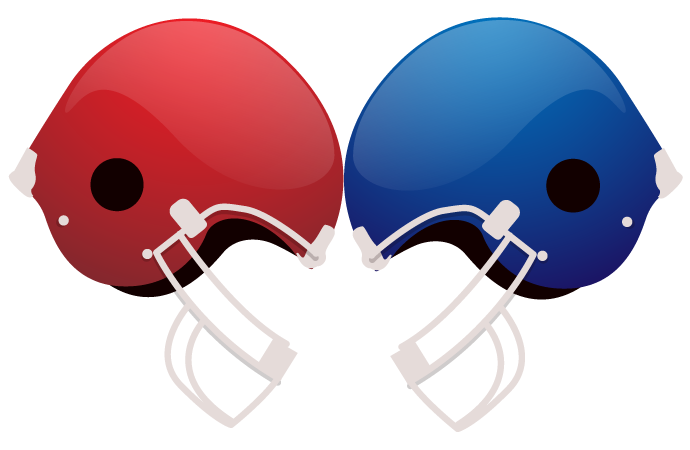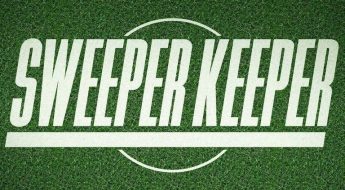Stacking up NFL's top offseason priorities for 2017

Bill Belichick couldn’t help himself. A day after his New England Patriots won Super Bowl LI, the head coach bemoaned the work ahead.
“We are five weeks behind the rest of the NFL for the 2017 season,” Belichick said.
Indeed, the offseason is well underway throughout the league. Teams are preparing for free agency and the draft, and the NFL office is setting its own agenda.
What follows is an attempt to identify some of the key leaguewide issues the NFL will address before we see competitive football back on our televisions. It accepts as a given some of the existential and ongoing agenda items the league will always face, including concussions and domestic violence, and focuses instead on some of the more incremental challenges.
A few of the items covered in the 2016 edition of this post remain on the virtual docket, including improving replay review and repairing the Pro Bowl.
1. Understand the ratings slide
Here’s what we know: Television viewership of NFL games dropped an average of 8 percent in 2016. That marks the first time in eight years that viewership failed to grow.
The decline was much more pronounced prior to the U.S. presidential election (14 percent) than it was afterward (1 percent). But the NFL can’t simply attribute it to the election and move on; the second-half improvement was due in part to the Dallas Cowboys’ outsized viewership numbers during the run-up to the playoffs. A much deeper examination is necessary, from advertising structure to kickoff times to game pace to scheduling.
It would be unrealistic to expect indefinite ratings growth, but at its core, the NFL is a television content producer. That is its product. The league must determine whether this drop was a function of larger issues within the broadcast industry or if it reflects a true decrease in interest.
2. Improve pace of game
Independent of its conclusions on ratings, the NFL could use a shake-up in its game administration and presentation. An anecdotal Vox.com study revealed that game action occurred on roughly 8 percent of an average game broadcast. The Wall Street Journal once estimated it at 11 minutes of a three-plus-hour game. The rest is consumed by commercials, between-play huddles, replays and the like.
(In 2016, the average time of game was 3:08, according to the Elias Sports Bureau. It was 3:09 in 2015, 3:06 in 2014 and 3:08 in 2013.)
The NFL is well aware of this challenge. At his annual Super Bowl news conference, commissioner Roger Goodell mentioned a number of possibilities for cutting time, including reducing commercial breaks from five to four per quarter, setting a “play clock” to cap the time between an extra point and the ensuing kickoff and using Microsoft Surface Pro tablets for replay reviews. Presumably, the NFL would exchange fewer commercials for higher prices.
Those changes might shave a few minutes from the overall time of game, if that. But most fans and viewers would agree — I hope — that less dead time is better.
3. Circle back on the kickoff rule
Owners must decide whether to discard, alter or make permanent the rule change that moved touchbacks from the 20- to the 25-yard line. The impact of the adjustment, designed to reduce injuries by incentivizing fewer returns, was mild at best.
Kickoff returns fell by 1.8 percentage points, from 41.1 percent of all kickoffs in 2015 to 39.3 in 2016. The touchback rate rose only slightly, from 56 percent to 57.6 percent, as many coaches sought to eliminate the incentive by kicking short of the end zone. Concussions on returns dropped by 15 percent, from 20 to 17, according to the NFL. Overall, however, there were more total injuries on kickoff returns in 2016 (39) than 2015 (35). The total accounts for ACL tears, MCL tears, concussions and hamstring strains.
Given that modest impact, and in light of the pace-of-game issue, the NFL might hesitate to continue with a play that brings action less than half the time. Look for the competition committee to consider a proposal from special-teams coordinators that would make the kickoff more like a punt, with most of the return team up on the line to minimize full-speed collisions.
4. Expand ‘My Cause, My Cleats’ initiative
In Week 13, the NFL gave players permission to wear custom cleats to raise money for the charity of their choice. More than 500 participated in what was a roundly applauded project that, for one week, allowed players to circumvent the league’s strict equipment and uniform code.
We know the NFL isn’t going to go bananas and allow players to choose their cleat color/style every week. But must “My Cause, My Cleats” be limited to one week? Money was raised by auctioning off the game-worn cleats at an NFL Auction. More weeks, and more cleats, would seem to be better than the alternative.
Expect the NFL to look into the possibilities. Business and licensing agreements are no doubt a consideration, but the goodwill — both in public and with players — would seem to be worth at least some revenue, if it comes to that.
5. Study chip technology
When we last left the story, the NFL was placing RFID chips inside footballs used for preseason and Thursday night games. Part of the yearlong experiment was to measure how close the balls got to the upright, in the event that the league ever considers narrowing the goal posts. More broadly, it was to test the durability and reliability of the chips themselves.
The dream, of course, is to use technology — rather than a 10-yard chain and an official’s subjective eye — to spot balls more accurately.
As we noted earlier this season, chips alone can’t tell officials where to mark the ball. A critical piece of data would still be missing. The chip can tell you where the ball is, but the official would still need to determine when the player was down — a task that would depend on eyeballs unless RFID chips were placed on the knees and elbows of every player.
But the chips, if reliable and durable, could still be useful, perhaps in replays to determine whether the ball crossed the goal line.
6. Adjust the Thursday night game schedule
Regardless of whether we want them or whether players like them, Thursday night games are here to stay. They will generate nearly $1 billion in revenue over the 2016 and 2017 seasons, and the NFL’s data — it’s what the league uses, whether you accept it or not — indicates that injury rates are no higher on Thursdays than they are on Sundays or Mondays.
“Thursday Night Football is something that we are very committed to,” Goodell said at Super Bowl LI.
That doesn’t make it impossible to change, and the NFL appears to realize that. Goodell indicated that the league might back away from its current mandate that all teams make at least one appearance per season. That would reduce the number of small-market matchups in prime time. As much as we love the Tennessee Titans and Jacksonville Jaguars, their annual Thursday night matchups don’t appeal to everyone.
7. Address celebration penalties
In at least some corners of the NFL, there was agreement that rules designed to prevent fights and promote sportsmanship have gone too far. The results were 30 demonstration penalties, including some for seemingly harmless acts such as pantomiming a basketball jump shot and pretending to shoot a bow and arrow. They were a small part of the more than 40,000 plays during the season, but they presented an outsized impression of a league focused on frivolous discipline.
Goodell said he will “look at” the resulting criticism in the offseason to see if there is a way to find a better balance between sportsmanship and “trying to allow players the ability to express themselves in an exuberant way.” Establishing a higher standard for taunting would be a reasonable and effective start.
8. Assess the California situation
The NFL appears to have reached the saturation point of its stadium-leverage game, at two franchises short of completion. Currently, no one wants the Chargers or the Raiders — at least not in the way the league is accustomed to.
San Diego ultimately refused the demands of Chargers owner Dean Spanos. Las Vegas isn’t offering the Raiders as sweet of a deal to relocate as it once appeared. As a result, the mighty NFL has the Chargers playing in a 30,000-seat soccer stadium for two years before they become tenants in the Rams’ privately built stadium. The Raiders are stuck in Oakland’s decrepit, multisport Oakland-Alameda County Stadium.
Is this situation unique to California, a state long opposed to public subsidies for new football stadiums? Or will it impact the next round of stadium requests — in, say, Buffalo, Kansas City or Washington, D.C. — in a way that will permanently discourage public funds? That will be a focal point in this offseason and beyond.
9. Advance the developmental league
But the rhetoric has increased in recent months, and Goodell said the league is “actively considering it” at the moment.
Some coaches would prefer bigger practice squads for developmental purposes, rather than turning over young players to another set of coaches. That’s understandable and helps explain the paralysis on this issue. The league might well decide that expanded rosters are a more efficient way to start, but they’ll also need to figure out how to get those players meaningful work on the field. Those discussions should occur this offseason.
10. Evaluate officiating technology
In 2016, the Canadian Football League debuted a centralized video official whose job was to correct obvious officiating mistakes via an HD broadcast feed, even if they were not reviewable by rule. The idea was to avoid the kind of errors that an average fan can identify while watching at home but on-field officials might have missed due to the intensity of action.
The NFL will be studying the impact of the CFL’s video official to see if there is anything to glean from it. Mike Pereira, the NFL’s former vice president of officiating, believes the league has already taken on an unwritten version of this approach. Pereira said in December that some referees rely on illicit advice over their wireless headsets from their replay officials, who are perched in the press box, to fix mistakes.
The next step should be to codify this practice so there is no question or rumor-mongering about what might be happening out of plain sight.






